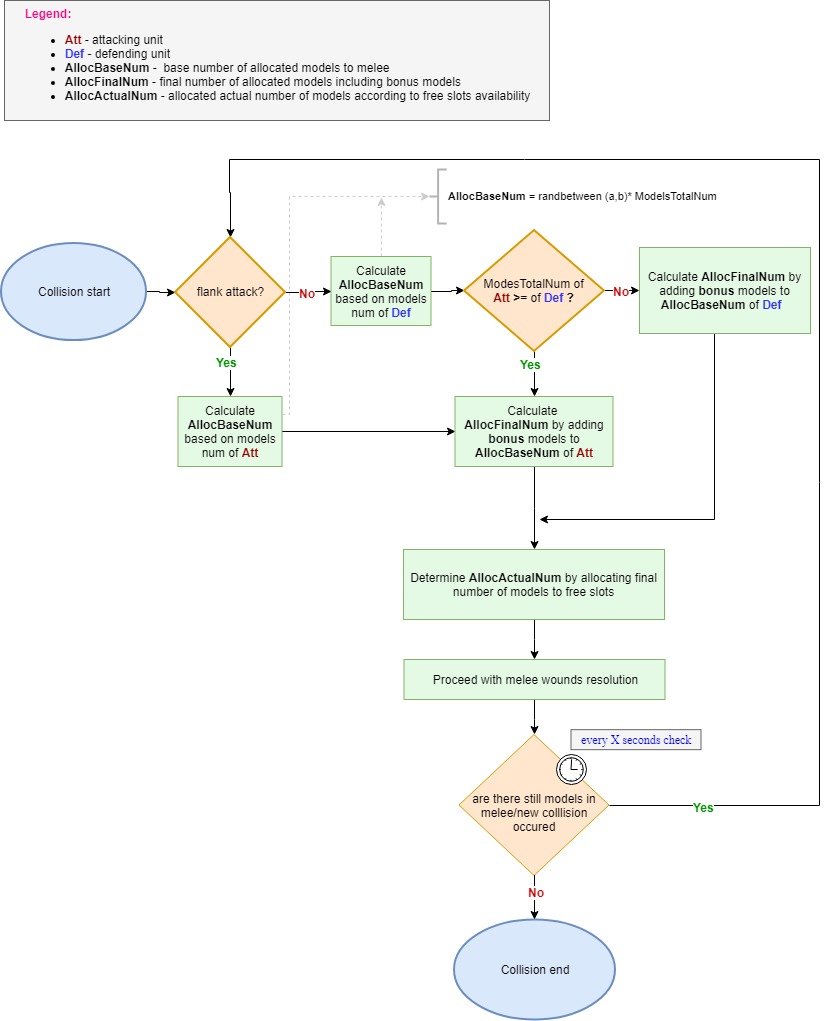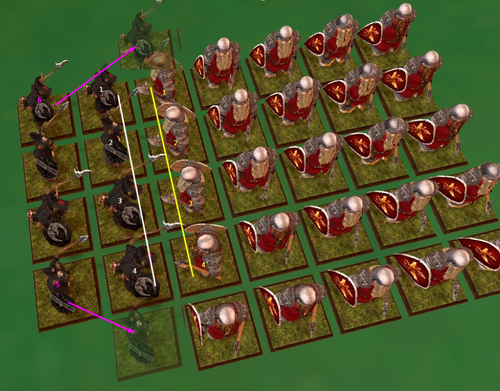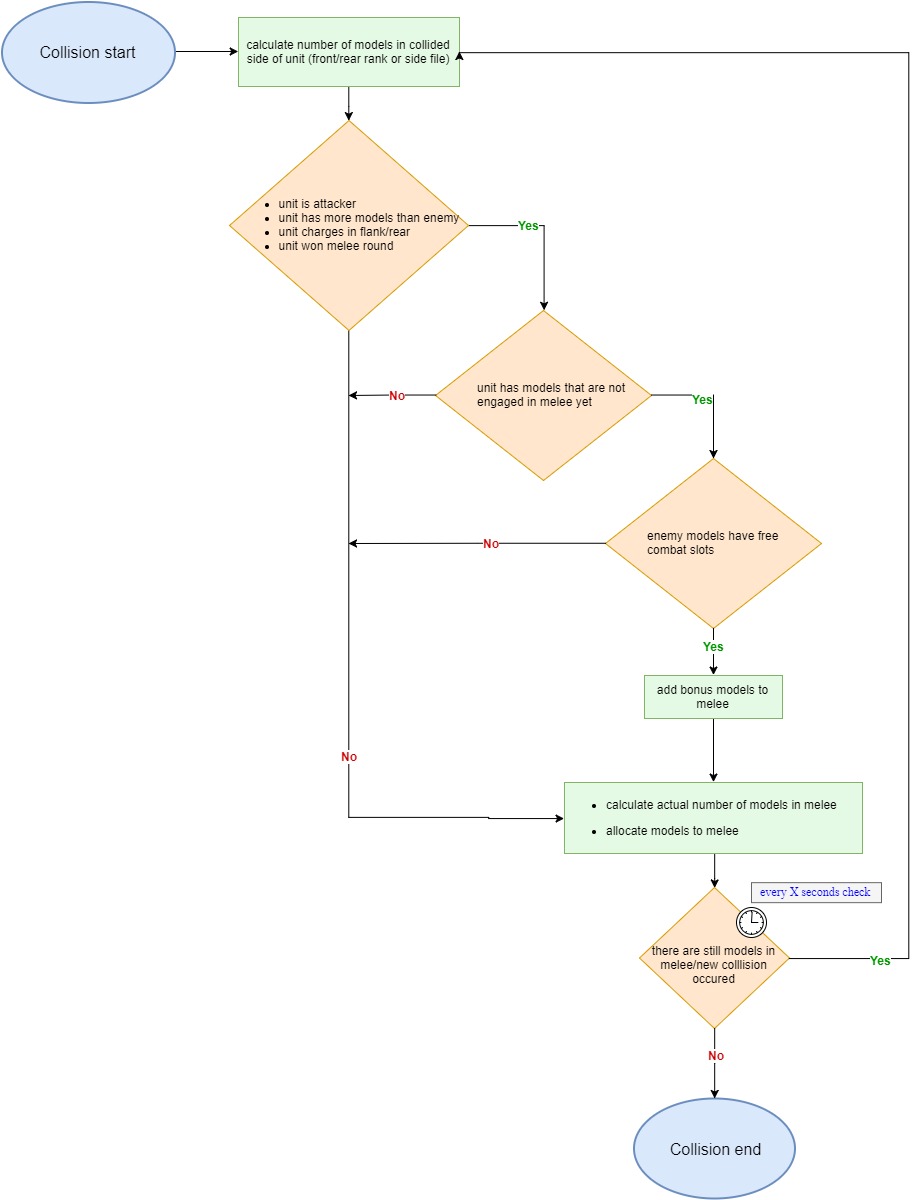Models allocation in melee
Melee combat starts when rival units collide with each other. Usually, not all models in unit get into fight but only part of them. There are following factors that determine how many models will get into melee from each side:
- number of allocated models to melee (from each unit)
- free combat slots around models
Allocated models
Number of allocated models to melee is determined based on total number of models in unit and direction of attack. If attack occurred in forward arc of defending unit then number of allocated models is calculated based on models total number of defender. If defending unit is flanked (i.e. attacked in side or rear arcs) then calculation takes into account models total number of attacker.
Final number
Final number of allocated models to melee equals base number + bonus number.
AllocNumfinal = AllocNumbase + AllocNumbonus
Base number
Base number is a percentage of total number of models in unit (attacker or defender explained above). This percentage determined randomly and usually is between 60% and 85% (rounded up). If a unit has 3 models or less they are all allocated to melee regardless.
AllocNumbase = randbetween (a,b) * models total number in unit
Bonus number
If it is frontal attack then unit with more models total number gets x bonus. Otherwise, attacker always gets x bonus.
AllocNumbonus = x
Actual number
When Final number of allocated models is calculated they are distributed to available combat slots of enemy models. Thus, Actual number of allocated models depends on number of free combat slots.
AllocNumactual <= Combat slots
Recalculation of allocated models
The game recalculates number of allocated models to melee after wounds resolution and\or on new collision with enemy unit. Round winner is considered as attacker.
Large models (in progress)
Unit with large model(s) such as giant spider is usually outnumbered by any unit with 8+ regular size models and is disadvantaged despite superior stats and traits.The idea is to boost survivability of large size unit by limiting free slots around them.
Combat slots
Combat slot is a free space around model that can be filled by enemy models during melee. Number of combat slots around model depends on model size and model's unit formation (i.e. adjacent friendly models may also occupy combat slots).
Regular size model can be surrounded by 4 regular size models or 2 large size models (or 2 regular and 1 large models)
Large size model can be surrounded by 8 regular size models or 4 large size models (or 4 regular and 2 large models)
Attacker (or round winner) always has priority to fill combat slot of defender (round loser).
Models allocation flowchart
DO in-game tests





